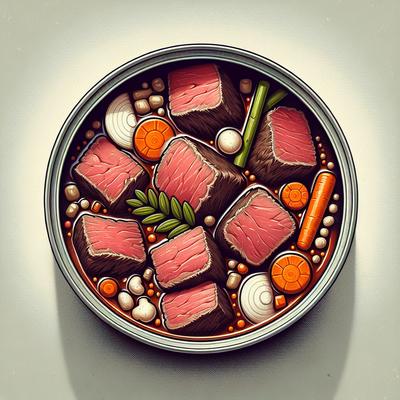Canned Venison
Preserve the hearty, rich flavors of wild game with this timeless recipe for Canned Venison, the perfect way to savor your harvest all year long. This straightforward canning method uses tender cubes of trimmed venison, optional pickling or canning salt, and a choice of venison stock or water to create a versatile, shelf-stable protein. Whether you’re following the raw-pack method for a pure, meaty flavor or adding liquid for a softer texture, this pressure canning process guarantees a safe, long-lasting seal. Ideal for meal prep, Canned Venison is a convenient pantry staple, ready to elevate stews, casseroles, or sandwiches with its robust taste and wholesome goodness. With easy-to-follow steps and minimal ingredients, this recipe is perfect for hunters, homesteaders, and anyone looking to enjoy the fruits of their labor year-round!
Try SnapCalorie's FREE AI assisted nutrition tracking free in the App store or on Android.

Scan with your phone to download!

Ingredients
- 4 pounds Venison (trimmed and cubed)
- 1 teaspoon per pint jar Pickling or canning salt
- 0 as needed Water or venison stock (optional)
Directions
Step 1
Start by trimming excess fat, sinew, and silver skin from the venison and cutting it into 1-inch cubes.
Step 2
Sanitize your canning jars, lids, and bands by washing them in hot, soapy water. Rinse them well and keep them warm. A dishwasher or keeping them in simmering water works well.
Step 3
Prepare your pressure canner according to the manufacturer's instructions, and add the recommended amount of water to the canner base.
Step 4
Pack the raw venison cubes tightly into the prepared jars, leaving 1-inch of headspace at the top.
Step 5
If desired, sprinkle 1 teaspoon of pickling or canning salt into each pint jar (use 2 teaspoons for quart jars). Adding salt is optional and primarily for seasoning, not preservation.
Step 6
You may choose to leave the venison dry in the jars (raw-pack method) or add hot venison stock or boiling water over the meat to fill the jars, still leaving 1-inch headspace.
Step 7
Use a clean, bubble-removing tool or a knife to release any trapped air bubbles from the jars. Adjust the headspace if necessary by adding or removing liquid.
Step 8
Wipe the rims of the jars with a damp, clean cloth to remove any residue. Place the lids on the jars and screw the bands on until they are finger-tip tight.
Step 9
Place the jars in the pressure canner, ensuring they are not touching each other. Lock the canner lid in place and follow the manufacturer’s instructions for venting steam and building pressure.
Step 10
Process pint jars at 10 pounds of pressure (or 15 pounds if at higher altitudes) for 75 minutes. For quart jars, process for 90 minutes.
Step 11
Once the processing time is complete, turn off the heat and allow the pressure canner to cool naturally until the pressure gauge reads zero. Do not attempt to force the cooling process.
Step 12
Carefully remove the lid, lifting it away from your face. Use a jar lifter to remove the jars from the canner and place them on a towel or cooling rack, ensuring they are spaced apart to cool evenly.
Step 13
Allow the jars to cool undisturbed for 12-24 hours. Check the lids for proper seals; they should not flex when pressed in the center. Any unsealed jars should be refrigerated and used within a few days.
Step 14
Label and store the sealed jars in a cool, dark place. Properly canned venison can be stored for up to a year.
Nutrition Facts
| Serving size | (2059.4g) |
|---|
| Amount per serving | % Daily Value* |
|---|---|
| Calories | 2866.7 |
| Total Fat 58.1g | 0% |
| Saturated Fat 21.8g | 0% |
| Cholesterol 2032.1mg | 0% |
| Sodium 2972.1mg | 0% |
| Total Carbohydrate 0g | 0% |
| Dietary Fiber 0g | 0% |
| Total Sugars 0g | |
| Protein 544.3g | 0% |
| Vitamin D 0IU | 0% |
| Calcium 200.8mg | 0% |
| Iron 61.7mg | 0% |
| Potassium 5770.1mg | 0% |
Source of Calories
